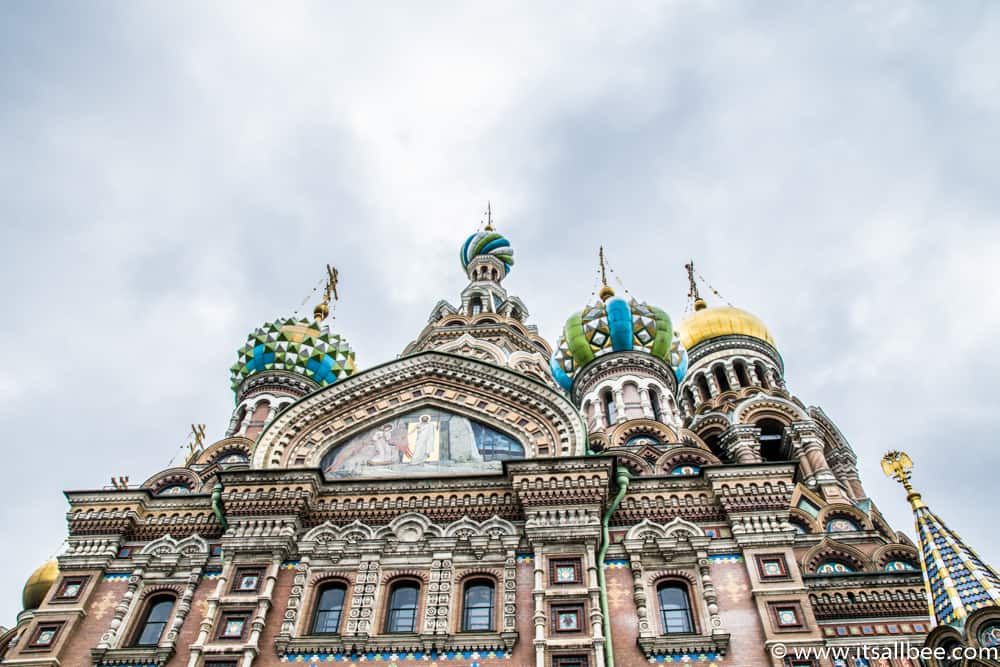
For travellers who visit a foreign country, it has become a tradition to return home with typical products from that place to share with friends and family. It is a nice way of bringing home a tiny piece of a new culture. Though it can be overwhelming sometimes, finding yourself going to many different shops without knowing what to look for, and perhaps even frustrating at times, as wastes that precious time that could be spent exploring the city. Therefore, we have created this list of souvenirs to buy in St. Petersburg. At the end of the list, you will also find some suggestions of where you can buy many gifts.
Russian souvenirs are relatively cheap, original and generally well made. The most recognizable Russian souvenir is undoubtedly the “Matryoshka” doll: several dolls, one inside the other, like the layers of an onion. However, this is far from being the only souvenir you can bring home.
St. Petersburg is recognized as one of the largest economic, cultural and scientific centers of Russia, Europe and the whole world. Naturally, the Northern capital is also bustling tourist center. You can find almost any type of Russian souvenir here. For those who are looking for a unique souvenir typical to St. Petersburg, the best option is to visit a store in the Imperial porcelain factory.
Also Read: How To See St Petersburgh In 3 Days
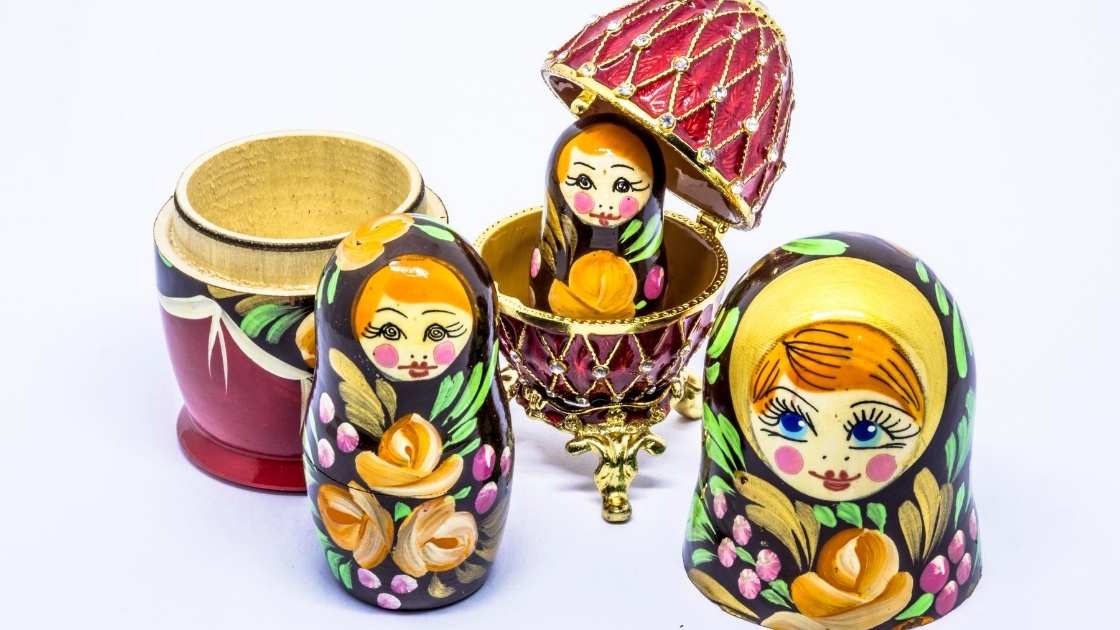
CONTENTS
- 1 The Best Souvenirs To Bring Back From St Petersburg Russia
- 1.1 Imperial Lomonosov Porcelain
- 1.2 Fabergé Egg
- 1.3 Laquer Boxes
- 1.4 FOOD & DRINKS
- 1.5 Russian chocolate
- 1.6 Medovukha or Vodka
- 1.7 SHOES & ACCESSORIES
- 1.8 Ushanka
- 1.9 Valenki (felted boots)
- 1.10 Pavlovo Posad shawl
- 1.11 TOYS & BOOKS
- 1.12 Dymkovo Toys
- 1.13 Matrioshka dolls
- 1.14 Tolstoy, Tarkovsky, Dostoyevsky’s books
- 2 Best places to look for gifts and souvenirs in St Petersburg
The Best Souvenirs To Bring Back From St Petersburg Russia
Imperial Lomonosov Porcelain
This is where the talented Russian scientist Dmitry Vinogradov (1720-1758) discovered the secret of making “white gold.” The St. Petersburg Imperial Porcelain Factory was the first in Russia and the third in Europe (after Meissen and Vienna). It was founded in 1744 by the order of the Empress Elizabeth, daughter of Tsar Peter the Great. The factory used to produce porcelain from local raw materials exclusively for the family and the imperial court. The factory continues this royal porcelain tradition by bringing its clients some of the finest hand-crafted porcelain products with truly intricate designs.
Fabergé Egg
You may have heard of famous Fabergé Eggs already. They are pieces of art created by a Russian jeweller Karl Gustav Fabergé from St. Petersburg for the Russian imperial family. These creations are inextricably linked to the glory and tragic fate of the last Romanov family. They were the ultimate achievement of the renowned Russian jewellery house and must also be considered the last great commissions of objets d’art. While buying an original egg would be insanely expensive and hardly even possible, there are beautiful, good quality copies sold in many locations. Their prices vary depending on their size and the materials used.



Laquer Boxes
Authentic Russian lacquer art features sophisticated hand-drawn miniature painting on a paper-mache box. The history of Russian lacquer miniatures started in 1795 when the rich merchant Ivan Korobov created the production of lacquer visors for military caps. The lacquer surface was considered extremely elegant and beautiful.
FOOD & DRINKS
Russian chocolate
Rich in taste, with the strong fragrance of natural cocoa and milk, it has been highly appreciated for generations – from the Russian Empire to our days (the oldest existing chocolate factory was founded in 1867). The best Russian chocolate is firm and slightly bitter. The most loved local labels include “Alyonka”, “Vdohnovenie” (Inspiration), “Lux”, “Visit” “Skazki Pushkina” (Pushkin’s Fairy-tales) and “Korkunov”.
Medovukha or Vodka
It is common to think that all Russians drink a lot of vodka. Well, it is a bit of a stereotype. Medovukha was a Russian #1 drink long before Vodka. Russian drinking culture originates from Mead consuming rituals of Varyags – Viking founders of Ancient Russia. It’s similar to wine (not strong spirits) and has unique honey flavor.
When it comes to vodka, know that not all vodkas are equally good in Russia. It is wise to take your time and ask a shop assistant for help to choose a high-quality vodka bottle, which you will probably be able to buy for quite cheap. Good middle-segment vodkas include: Zelyonaya Marka, Belenkaya, Stolichnaya, Smirnoff, Evreyskiy Standard (kosher vodka made of matzo). Premium class segment vodkas are Beluga, Stolichnaya Gold.
For a non-alcoholic Russian drink, look for Kvass
It is an ancient Russian non-alcoholic drink made from bread by means of fermentation from natural ingredients and little sugar. Traditional Russian Kvass has a deep brown color and resembles stout beer by taste. It is very popular among the locals, so you should be able to find it easily in any supermarket or food store. Kvass is largely known in Russia as a very wholesome drink, rich in vitamins and helping people prevent or resist various health problems. What better gift could there be?



SHOES & ACCESSORIES
Ushanka
A Russian fur cap with ear flaps that can be tied up to the crown of the cap, or fastened at the chin to protect the ears, jaw, and lower chin from the cold. An alternative is to bend the flaps back and tie them behind the head, which is called “ski-style”. Though ushankas are a distinctly Russian hat, indeed, the stereotypical Russian is seen to wear one, the wearing of fur caps of similar design is common throughout China, North Korea, Eastern Europe and the former Soviet Union. It is also worn widely in North America and Canada. Many locals wear it during the cold season, as it never fails to protect from cold.
Valenki (felted boots)
Honestly, the best option when it comes to keeping your feet warm. These boots won’t fail to do so, being specially made of felted wool to be worn in thirty to forty degrees below zero. The first felted boots in history were supposed to be worn by the nomads of the Great Steppe more than a thousand years ago and they still make part of the winter uniform of the Russian army.
Pavlovo Posad shawl
Typical Russian clothing and handicraft, reflecting Russian culture. Tracing the evolution of Pavlovsky kerchief, it is important to stress that, today, like it was before, this art is closely bound with artistic processes going on in the Russian culture, it constantly experiences some influence of the world fashion, takes into consideration modern tendencies in the development of the textiles, while following the traditions preserves expressly displayed national originality. It can be worn in any kind of weather. Whether it’s a cold frosty morning in December or a chilly midsummer evening in July, they offer enough tender warmth and comfort that’s just right for any weather!
TOYS & BOOKS
Dymkovo Toys
Dymkovo toys, also known as the Vyatka toys or Kirov toys are moulded painted clay figures of people and animals (sometimes in the form of a pennywhistle). These handicrafts, traditionally made by women, are an important part of Russian folk art, whose history goes a long way. The tradition of making pennywhistles in the form of a horse, a horserider or a bird is tied to the ancient magic rituals and old agricultural calendar holidays, such as the ritual spring holiday of Svistoplyaska (i.e. whistle-dance) celebrating the Sun.
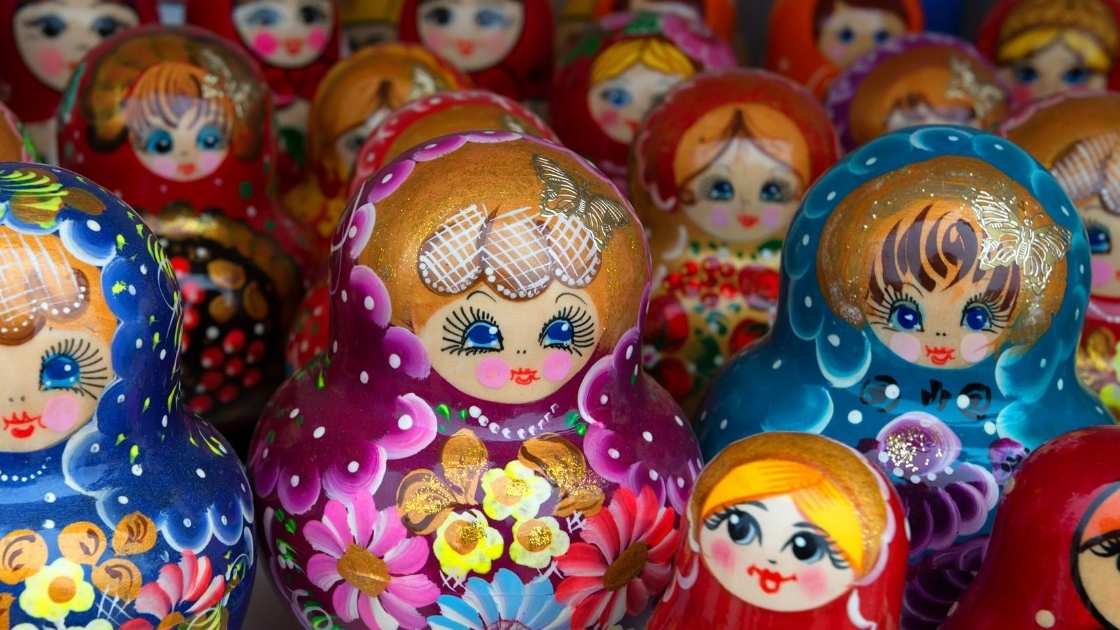
Matrioshka dolls
Matryoshka, also known as the Russian nesting doll, is one of the most instantly recognizable symbols of Russia and more importantly, as a symbol of the feminine side of Russian culture. Matryoshka in Russia is associated with family and fertility. The biggest doll is called “mother”, the smallest one is called seed. If you decide to buy a matryoshka as a souvenir, we will recommend a place where you can find good quality dolls in another section of this article.
Tolstoy, Tarkovsky, Dostoyevsky’s books
These two authors are, perhaps, the most notable pillars of the Russian prose of all times. You could probably find these in English at Anglia Bookstore in St. Petersburg, which has the biggest range of English-language books in the city.
Best places to look for gifts and souvenirs in St Petersburg
Museums
For example, chocolate and Russian vodka museums are in St. Petersburg, which you can visit not only to learn about the history of these popular products, but also to pick the best options to present to your loved ones.
Bookstores
Anglia or Dom Knigi offer a wide selection of books in different languages that can be both useful guides for travellers as well as informative reads for friends and family back home.
Street Markets
A perfect option for souvenir-hunting during the high season, when the weather is nice outside. Sellers of all kinds set up their tents in the city’s hotspots, such as in front of the Church of the Saviour on Spilled Blood and the General Staff Building. Prices may be a bit higher when there are a lot of tourists, but haggling is widely accepted, so don’t be shy and you may just get the best bargain in town!
Be extra aware of your surroundings though and look after your belongings, as pickpockets love targeting such places.
Eliseyev Emporium
Not to be confused with a supermarket, the Eliseyev Emporium has a fine collection of the best Russian produce. Your eyes will water at the beautifully decorated interior inside with its plethora of choices: chocolate, vodkas, cheeses and desserts.
Gostiny Dvor
It is basically an array of little shops all organised together in long galleries in a really old building, which once was the main shopping center for the city.
Matreshka Tanushka shop
This is a stall inside the market that has the best display of dolls in the city. The owner is very knowledgeable and friendly. You can learn about the history of matryoshkas in English and even read some fairytales.
Also Read:
- How To Get To St Petersburg From Helsinki
- Exploring St Petersburg Mosque
- Tips For Church Of Savior On Spilled Blood
Pin For Later
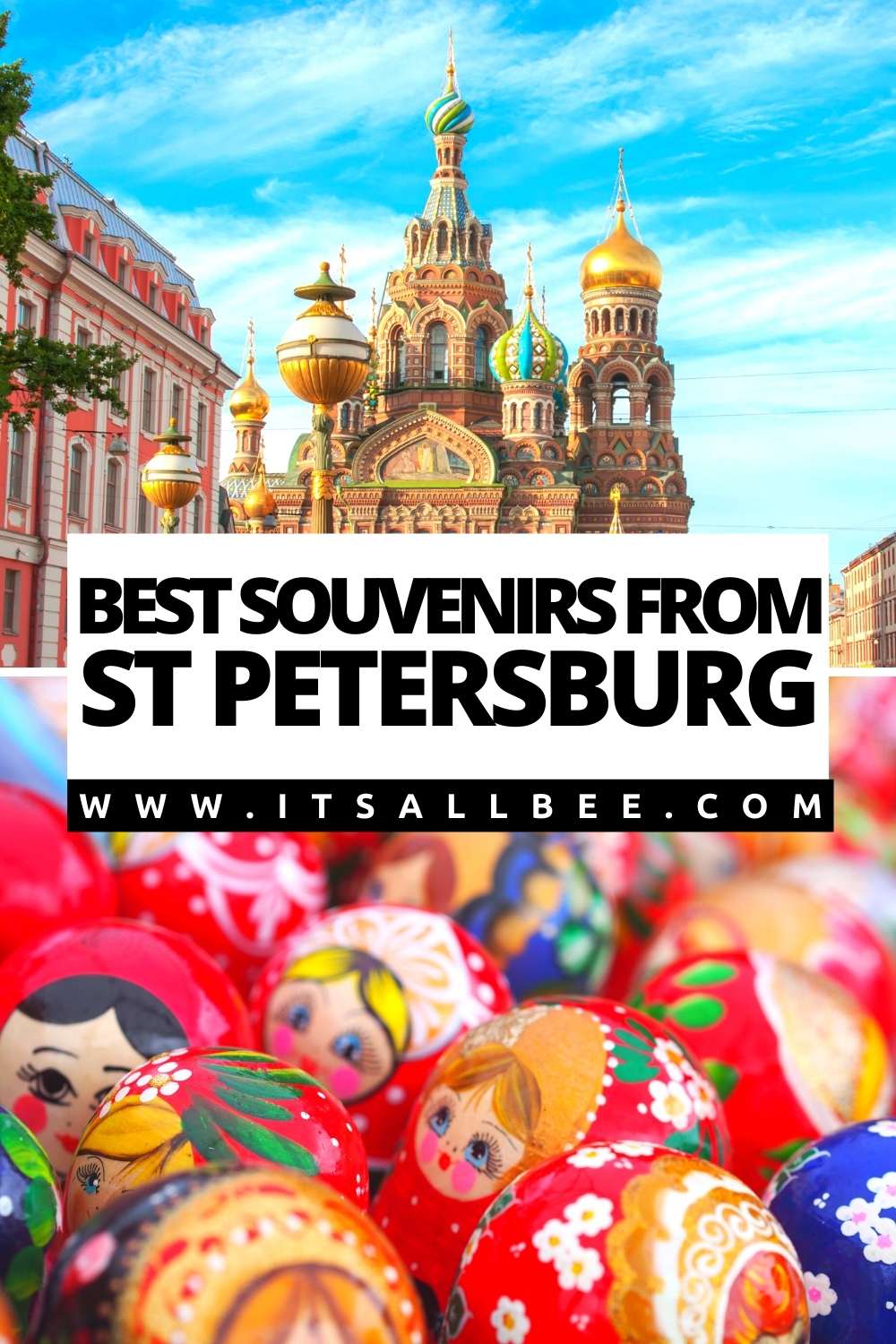
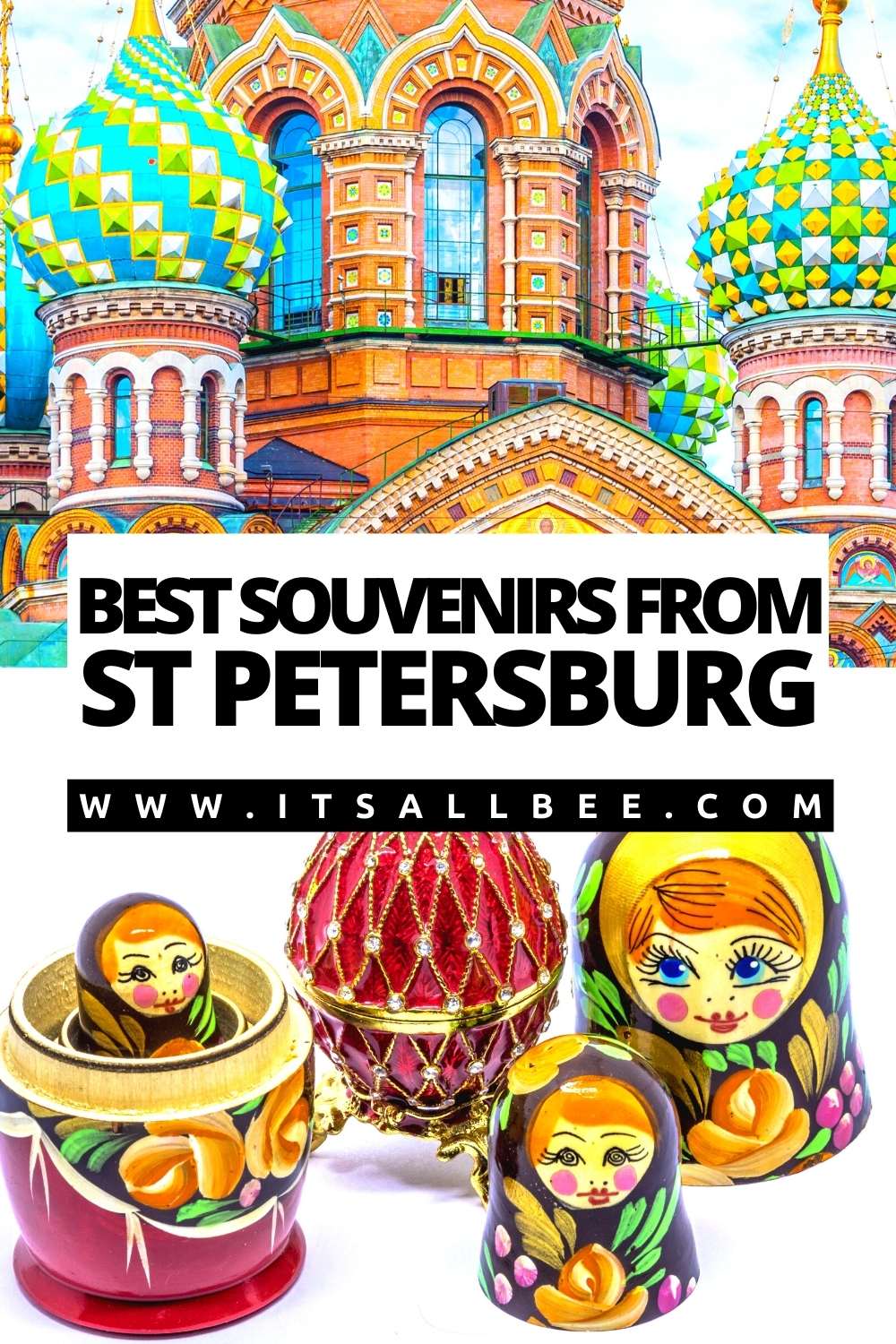
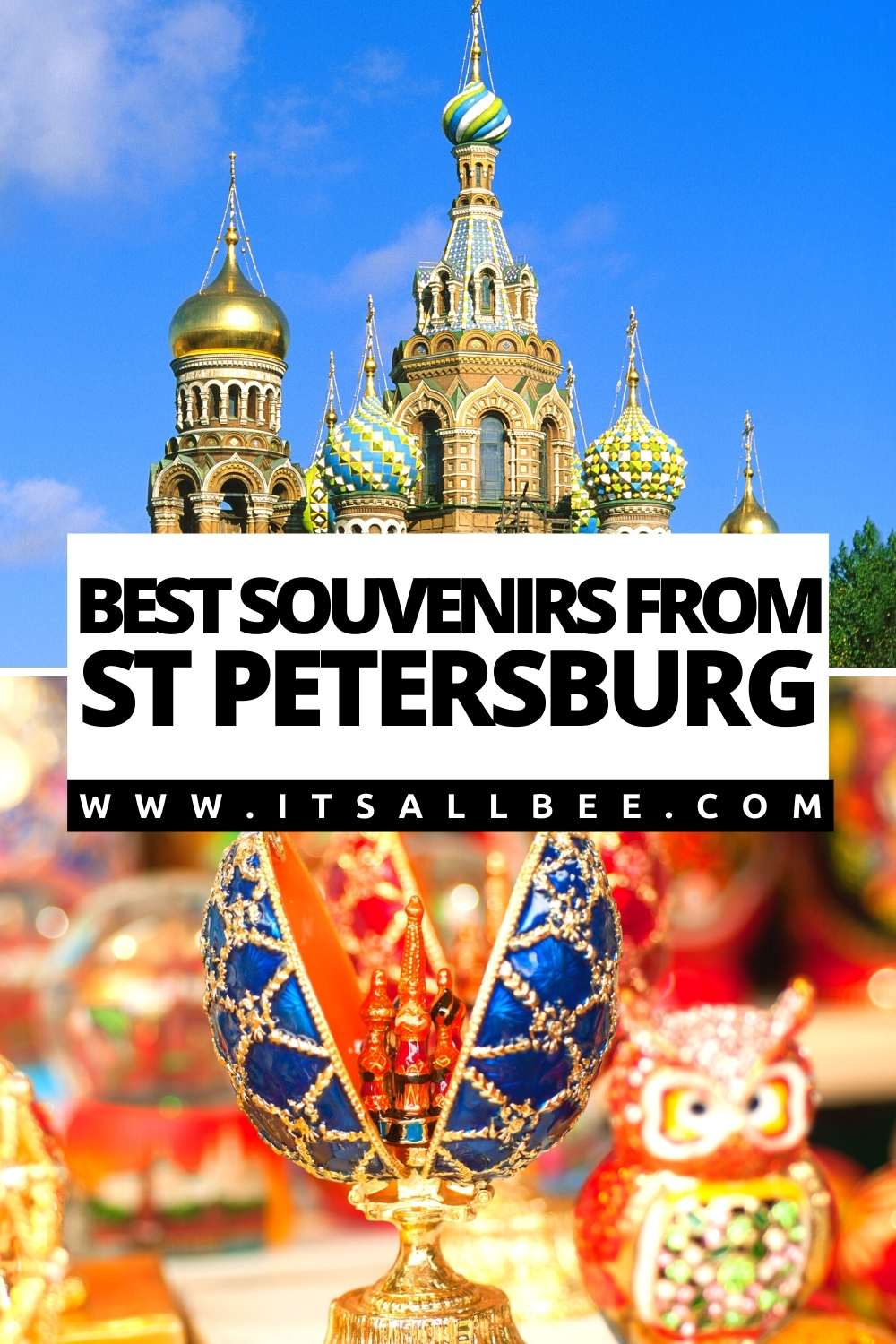

Leave a Reply